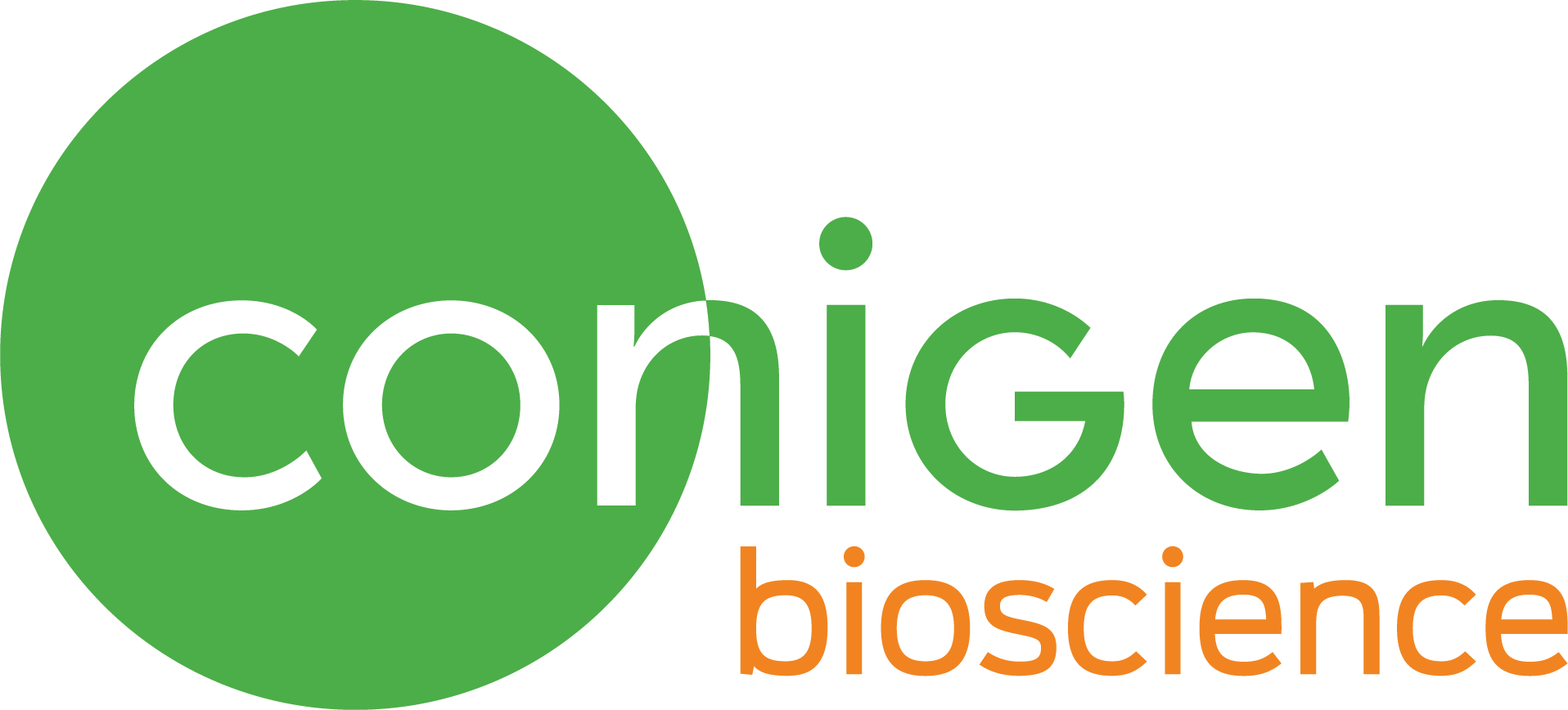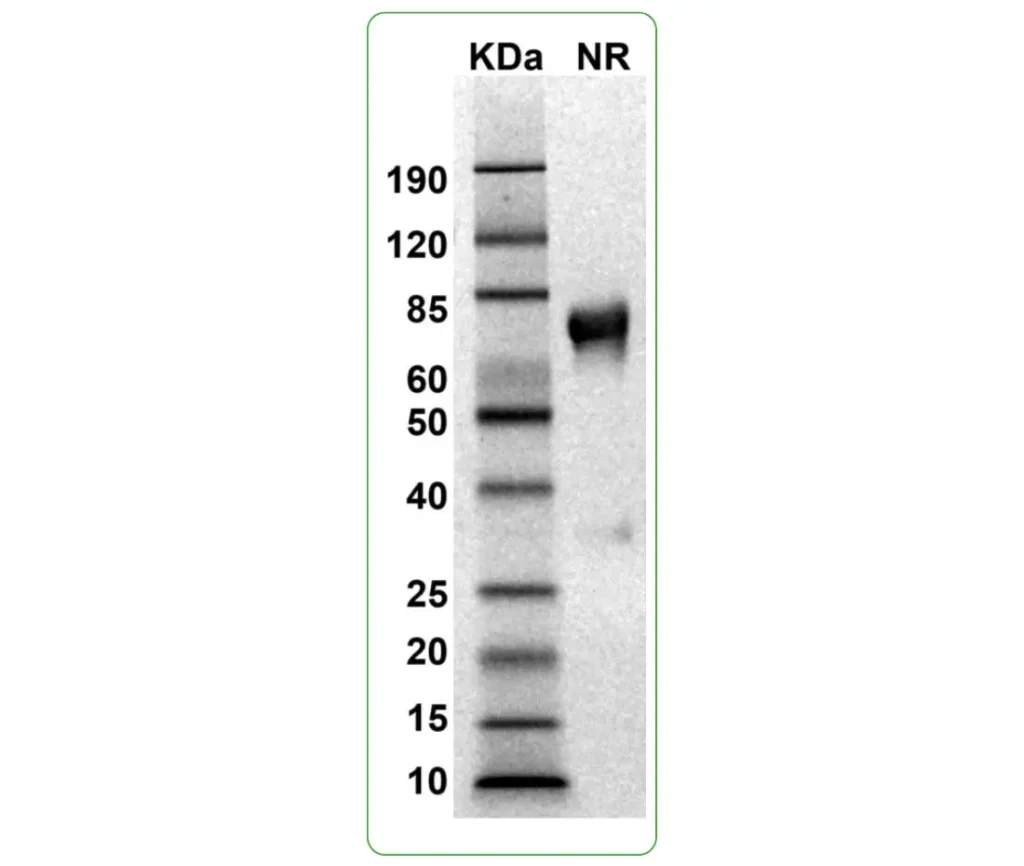Bioactive, Recombinant Human CD95 Protein Dimer, His Tag
| Product Code | CSP-25163-01 |
| Expression Host | HEK293T |
| Verified Applications | SPR for CD95 and CD95 ligand (CD95L/FasL) protein binding assays. |
| Suggested Applications | ELISA & BLI for CD95 and CD95L/FasL protein binding assays. Animal immunization, RUO. |
| Purity | Greater than 90% dimer form as determined by SDS-PAGE under non-reducing condition |
| Amino Acid Range | Q26-N173 |
For Research Use Only (RUO)
Price: $125.00
Price: $195.00
Price: $350.00
Price: $750.00
Price: $2,500.00
Specifications
Formulation: 0.22μm filtered PBS, pH 7.4
Shipping: Frozen Dry Ice
Storage: -80°C
Human cluster of differentiation 95 (CD95) is a death receptor and a Type I transmembrane glycoprotein. CD95 can form homodimers or homotrimers in the absence of ligand. The recombinant CD95 protein dimer (CSP-25163-01) is a cis-homodimer (cis-dimer) and contains a CD95 extracellular domain (UniProt# P25445, amino acids Gln26-Asn173) fused with a proprietary cis-dimer motif followed by a His tag at the C-terminus. This dimeric protein is expressed in HEK293T cells. The recombinant human CD95 protein dimer is bioactive and can bind to CD95 ligand (CD95L/FasL). This CD95 dimer can be used as an antigen for in vitro assays and antibody screening, and as an immunogen for immunization to generate antibodies targeting more conformational epitopes.
Protein Name: CD95 (Fas)
UniProt #: P25445
Predicted Molecular Weight: 49 kDa
SDS PAGE Molecular Weight: The migration range of the dimer protein with glycosylation under non-reduced condition is between 60-85 kDa on SDS PAGE.
Protein Construct: CD95 protein dimer contains a CD95 extracellular domain (UniProt# P25445) fused with a proprietary cis-dimer motif followed by a His tag at the C-terminus.
Background
Human cluster of differentiation 95 (CD95) is a death receptor and a Type I transmembrane glycoprotein. CD95 is also known as tumor necrosis factor receptor superfamily member 6 (TNFRSF6), Fas receptor (FasR), Fas, apoptosis antigen 1 (APO-1), APT, ALPS1A, FAS1, FASTM, and Fas cell surface death receptor. It plays a critical role in the regulation of apoptosis (programmed cell death). CD95 contains an extracellular domain with three cysteine-rich domains (CRDs) and a pre-ligand assembly domain (PLAD) which allows it to form homodimers or homotrimers in the absence of ligand. When CD95 binds its ligand CD95 ligand (CD95L), also known as Fas ligand (FasL), it leads to a form of programmed cell death known as apoptosis. Although CD95 has been shown to promote tumor growth in mouse models, in humans the gene is often deleted in cancerous tumors, suggesting it may function as a tumor suppressor. A recombinant protein mimicking the CD95 dimer conformation can be a very useful for cancer research and therapeutic discovery.
Alternate Names: tumor necrosis factor receptor superfamily member 6, TNFRSF6, Fas receptor, Fas, FasR, apoptosis antigen 1, APO-1, APT, ALPS1A, FAS1, FASTM, Fas cell surface death receptor

